“Out of the bosom of the air
Out of the cloud-folds of her garments shaken,
Oer the woodlands brown and bare,
Over the harvest-fields forsaken,
Silent, and soft, and slow
descends the snow.”
—Henry Wadsworth Longfellow
Art of Retreating
During this retreat I would like to go deep into myself, leaving all the different layers behind. I know that deep down in the very bottom of my heart a treasure is waiting for me. I can find it by the process of “spiritual archaeology.” I feel that this treasure will give me the strength required to deal with the compromises I make in my life that keep me in the so-called comfort zone. It is a dangerous zone that gets darker each time I act in a way contrary to what I know to be true.
Green Philosophy: Bhakti
When our spiritual teacher, A.C. Bhaktivedanta Swami Prabhupada, explained the philosophy of Bhakti Yoga to all of us students in the 1960s-70s there was already a small ecology movement in this country.
Stop the Suffering
The following is a speech given at a vigil in support of the people of Darfur, hosted by Students Taking Action: Darfur (STAND) at the University Chapel, University of Virginia.
Good evening.
We have all come together this evening to pray for, and show solidarity with, those who are suffering at the hands of others in Darfur. Certainly prayer is appropriate and powerful.
But we should also inquire: Why is there so much suffering, not just in Darfur, but everywhere? And what can we do about it? Because if we are really compassionate and sane, we want to stop the suffering in Darfur and around the globe, permanently.
Tale of a Universal Principle
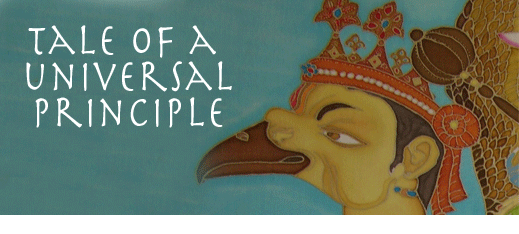
One day, high up in the mountain retreat of Shiva, Vishnu came to see him, & left behind, at the entrance, his eagle-like carrier, Garuda.
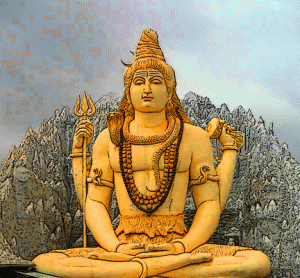
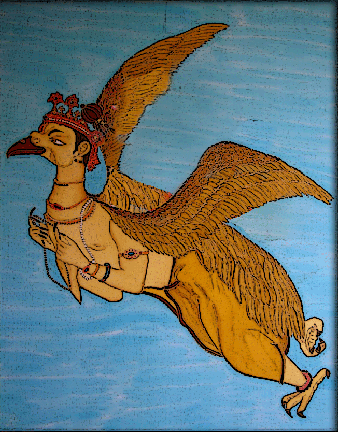
While sitting alone, marveling at the natural splendor of the place, Garuda’s eyes fell on a beautiful creature—a small bird seated on the archway crowning the entrance to the retreat.
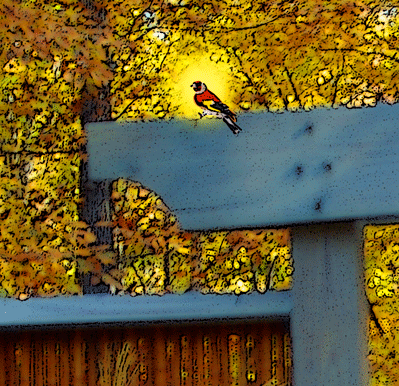
Garuda wondered aloud, “How marvelous is this creation. He who’s created these lofty mountains has also made this tiny bird—& both seem equally wonderful.”
Just then, Yamaraja, death personified, appeared on the scene for a meeting with Shiva. As he passed beneath the archway, his eyes also went to the bird, & he raised his brow in a quizzical expression—if only for a moment—& then he continued on his way.
Now, to those familiar with Yamaraja, even a slight glance by him is said to be the harbinger of death. Garuda, who’d observed Yama’s glance toward the bird, said to himself, “Yama’s looking intently at this bird can mean only 1 thing—the bird’s time is up. Most likely, on his way back, Yama will carry away the living entity who’s presently using the bird’s body, and provide him his next body.”
Garuda, also being in a bird-like body, was filled with pity for the helpless creature related to him in form. That the bird was oblivious of its own impending doom further agonized Garuda, & he resolved to save the bird from the clutches of death. And so he swooped it up in his mighty talons, rushed to a forest thousands of miles away, & left the bird on a rock beside a brook. Then, just as quickly, Garuda returned to Shiva’s retreat and regained his position at the entrance gate to wait for Visnu.
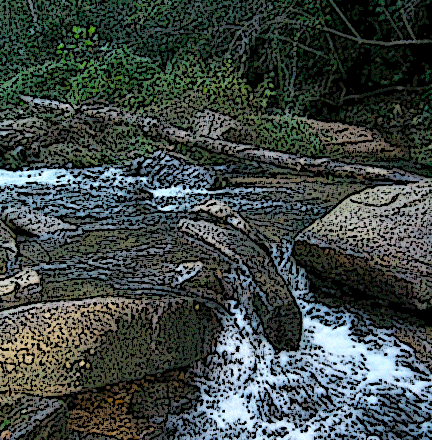
Shortly, Yama emerged from inside, & nodded to Garuda in recognition. Garuda greeted death personified and said, “May I put a question to you? On your way in you saw a small bird, & for a moment you became pensive. Why?”
Yama answered him, “Well, when my eyes fell on the little bird, I saw that the jiva with the bird-like body was to leave his body/die in just a few minutes. But I was puzzled, as that particular bird was to “die” being swallowed by a great python, some thousands of miles away from here in a forest, near a brook. And I wondered how this tiny bird would traverse the thousands of miles separating it from its destiny in such a short time. But then I ceased to think about it—but surely it must have already happened somehow.”
After saying this, Yama smiled and went on his way.
From Bhagavad-gita, As It Is (below)
(Translation and purports by His Divine Grace A.C. Bhaktivedanta Swami Prabhupada)
“Those who are seers of the truth have concluded that the non-existent [the material body] there is no endurance and of the eternal [the soul] there is no change. This is concluded by studying the nature of both.” —BG 2.16
“For the soul there is neither birth nor death at any time. He has not come into being, does not come into being, and will not come into being. He is unborn, eternal, ever-existing and primeval. He is not slain when the body is slain.” —BG 2.20
“One who has taken his birth is sure to die, and after death one is sure to take birth again. Therefore, in the unavoidable discharge of your duty, you should not lament.” —BG 2.27
Returning to the Gita: A modern tale
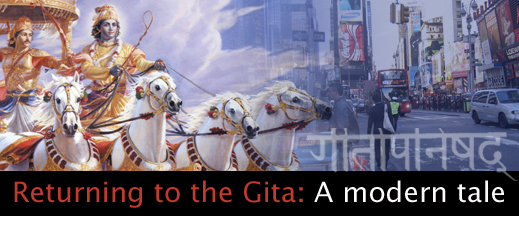
Before I turned 18, I lived in 4 countries and attended 6 schools. Transition, adjustment, flexibility – these were concepts I understood and embraced. It was after I settled into a dorm room at Columbia University as a freshman that time stopped moving so quickly, and my attitude started to shift from adaptation to identification and independence.
If There is Consciousness There is a Soul
Americans love their pets. We feed them better than most humans in third world countries are fed. We dote on them with toys at Christmas, and we award them the honorary status of “children.” But do we acknowledge that all creatures are, like us, spirit soul? [Read more…]


